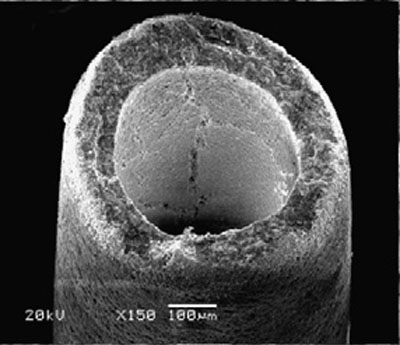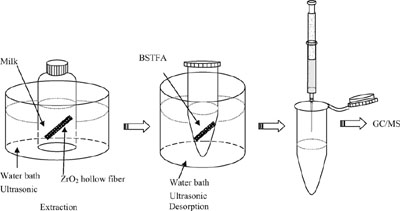This research has demonstrated that HFSE combined with GC–MS is a sensitive and selective technique for the determination of melamine residues in dairy samples at low ?g/mL level. It takes a few hours to quantitatively determine the content of melamine residues in the milk. The biggest advantages of the proposed method are: simple and fast collection from milk, extraction and concentration with HFSE, and fast analysis by GC–MS. HFSE combined with GC–MS can significantly reduce solvent consumption and time for purification and pretreatment in the sample preparation. Thus, due to its efficiency and convenience, HFSE combined with GC–MS could become a potential tool for quality control to monitor the amount of melamine residues in the milk products.
The research was published in Journal of Chromatography A and was highly praised by the reviewers of the journal. They said that the research provided an elegant approach for analyzing milk products for melamine residues without typical sample preparation techniques that involve protein precipitation and sample clean-up and the method was fast, accurate, quantitative and timely. And the importance of the development of such a method is obvious given the issues with melamine contamination in milk and the subsequent illnesses and deaths of infants consuming that milk. The related research was also published in Analytica Chimica Acta.
The work has won support from the National Nature Science Foundation of China (NSFC No. 20875095).
Abstract of the paper published inJournal of Chromatography A
Abstract of the article published inAnalytica Chimica Acta




